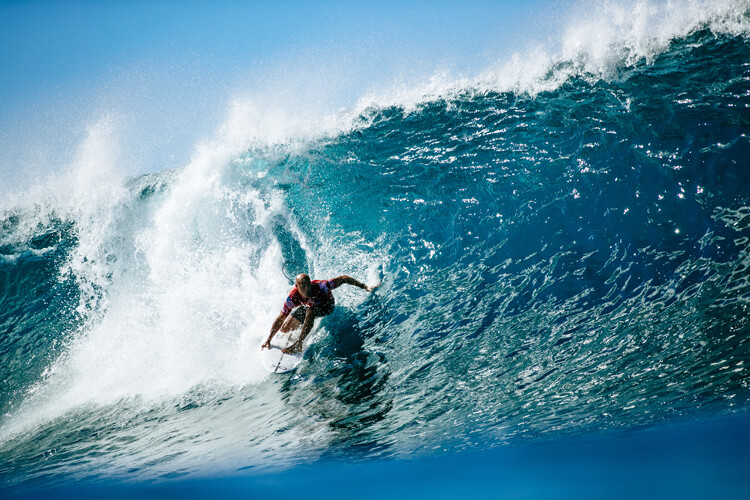Aging is a slow, steady, continuous, and adaptive process of physiological deterioration. So, how can surfers adapt to different life stages?
We can't - and never will be able to - stop the passage of time.
Life is a one-off golden opportunity that we should cherish every time we wake up in the morning.
When we're young, we don't care about age and aging. It's not a problem, and it has never been a thing we had to cope with.
And that's fine. It's exploration time. It's a time to chase our limits, fail dramatically, and succeed in experimenting.
In most cases, people only become aware of age-related issues by the time they reach their 30s.
The process of getting older is an accumulation of changes that become more noticeable around that age.
It all starts with small, nearly irrelevant, spaced-out hints that our body - and mind, too - gives us, indicating that we're not 18 anymore.
These tell-tale signs start to appear on our skin, hair, bones, and muscular system and then gradually evolve to digestive, cardiovascular, nervous, hearing, sight, and other body functions and systems.
From a technical and scientific perspective, our metabolism starts to decline at the age of 20.
So, regrettably, the fountain of youth is a short period in our lives.
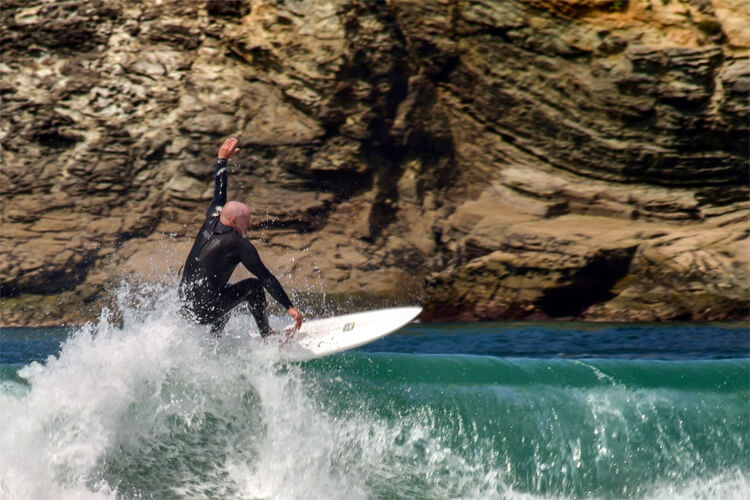
Something Changed
By the time surfers hit 40, they realize some things have really indeed changed. Why? Because the changes in our bodies are more frequent and more noticeable.
Is that a problem? It's a natural process. Is it a sad inevitability? No, it's actually a really good sign. It means we're alive.
Will it have an impact on our surfing performance? Yes. But again, that's part of life and something that we will never be able to change.
Can we still improve our surfing skills? Yes. And if you're in your 50s, 60s, and 70s, you can even start surfing.
The good news is that human longevity can do wonders.
Today, it is not rare to see surfers in their 60s and 70s enjoying their share of waves in head-high conditions.
They probably won't be throwing airs and getting barreled deep inside a Teahupoo cylinder, but they're surfing and drawing smooth lines across the wave face.
And that's what surfing is all about - having fun. The rule is valid for everyone, old and young, men and women.
Kelly Slater is an example of how a healthy lifestyle might push a professional surfing career into the 40s. But that's not the norm.
So, if you've reached your 30s, 40s, 50s, and 60s, the following tips will help transform aging into an opportunity to surf more and better waves.
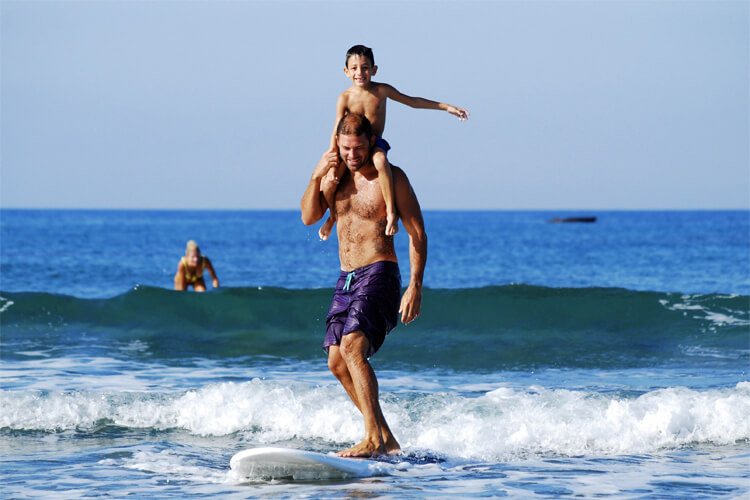
Eat Well
By the time you're in your 40s, you won't be able to paddle out and enjoy a 90-minute session to the fullest without a balanced diet.
It's not a matter of being vegan, vegetarian, Mediterranean, or an enthusiast of a particular type of diet. It's about eating well and following your natural nutrition needs.
A fat and sugar-based diet won't help you get on a surfboard because, as we get older, it is harder to burn off calories.
Obesity and excessive alcohol consumption are not compatible with surfing and will only make things difficult if you're already a grown-up adult.
So, just try to eat healthily. And you won't even need to become a slave to rigorous trendy diets.
Pick Your Sessions
Adult life isn't easy. There are a lot of responsibilities and almost no spare time for chasing waves.
That's why it is important to be picky and selective when choosing where and when to put on a wetsuit and paddle out.
If you're out of shape, you probably shouldn't be getting wet in closeout or maxed-out conditions. Be conservative and go for it when you know you'll be enjoying your time in the water.
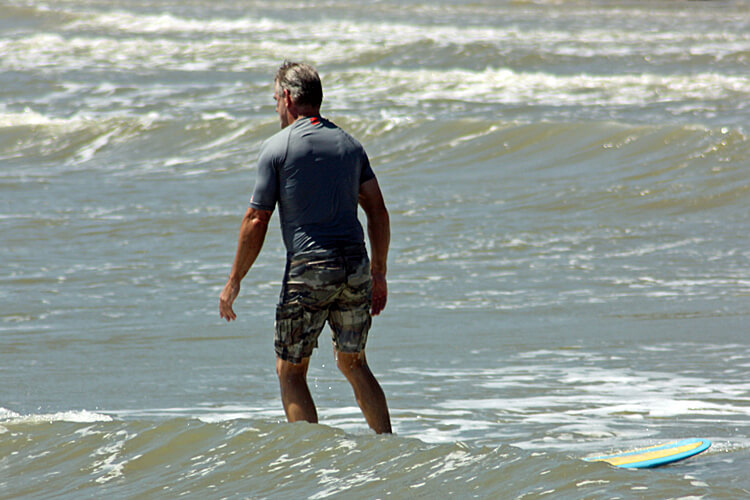
Don't Follow the Flock
One of the most common mistakes surfers make is choosing the most crowded peak.
And that is one of the things you can avoid, especially as you get older.
Even though the waves are better at the main peak, there will be too many surfers disputing priorities and optimal positions in the lineup.
Do you really want to enter that game at the age of 40 or 50? Probably not.
Maybe it's better to paddle out at an alternative peak, with less competition and not-so-perfect waves, than going through the stress of having to fight for a wave.
Fine-Tune Your Wave Selection
One of the great things about surfing is that the more you surf and get older riding waves, the better you understand the mechanics of the ocean.
At the age of 20, you might be able to catch 30 waves per session in the morning and repeat the feat in the afternoon.
By the time you hit 40, you'll realize that ten good waves are a good reason to be happy and celebrate.
So, make sure to play the experience card.
Use your advanced wave reading skills to catch the best waves or those who will offer a clean face for you to express your surfing style.
Look around. Can the kid next to you spot that good wave approaching on the horizon? Probably not.
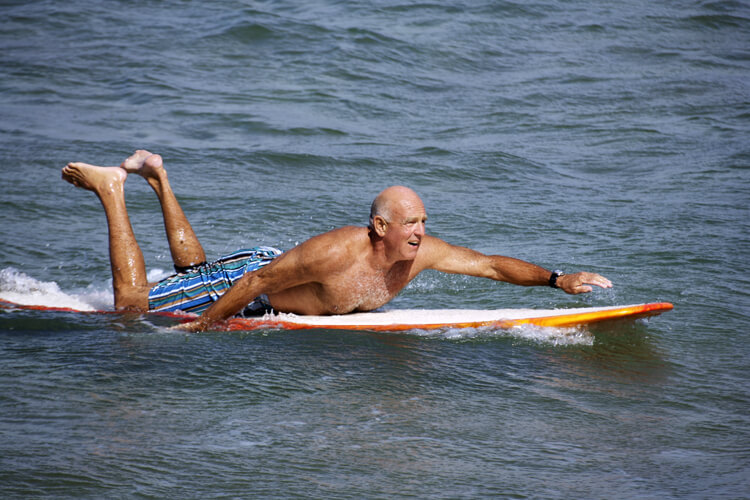
Don't Force Your Body - Listen to It
As you get older, your muscles won't perform optimally and at the level you were used to in the past.
A pre-surf warm-up is mandatory. Otherwise, the risk of injuries and painful recoveries increases exponentially.
Forget about explosive paddling strokes into impossible waves - you'll only be adding stress to your back, neck, and arm muscles.
Play it safe and take your time.
Consider your first waves as a warm-up routine, and let your body adapt to the initial movements around the water before thinking about getting more active.
Whenever possible, exercise your muscles - at home, work or the gym.
Adapt Your Quiver
A balanced quiver is key to aging well in surfing.
The general rule of thumb is the older you are, the more volume you'll need in a surfboard.
Boards with an above-average wide point, thicker rails, and rounder noses will always be the equipment of choice for older surfers.
A longboard, a funboard, and a retro fish shortboard will certainly help you catch and surf more waves while simultaneously putting less stress on your body.
Accept Your Age
Accepting our age is one of the most difficult challenges we face throughout our lives.
And it is even harder for those living in societies where age is a handicap.
Aging in surfing is a great thing. It's a synonym for a timeless and inclusive outdoor activity that leaves no one behind.
It is also a reminder of the beauty of the sport and how it allows us to enjoy it to the fullest, no matter how old we are.
One day, looking back at our life, we - and the ones who follow us - will have perpetual memories and something to be proud of.
